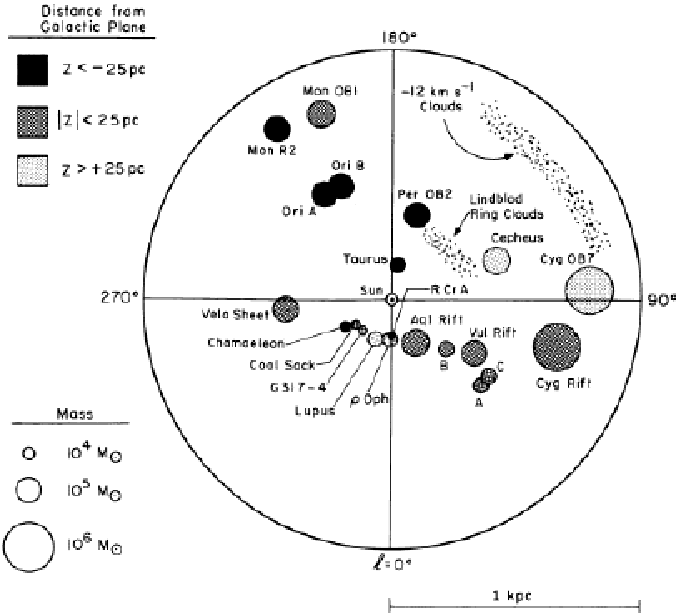



Next: The Atomic Hydrogen
Up: The Molecular Clouds
Previous: The Molecular Clouds
Contents
The molecule of Hydrogen is homopolar, and therefore it has no electric dipole moment.
For this reason it does not emit either vibrational or rotational radiation.
The most abundant molecule after  is expected to be carbon monoxide, CO, with emits strong line radiation at 2.6 millimeter, corresponding to the J =
is expected to be carbon monoxide, CO, with emits strong line radiation at 2.6 millimeter, corresponding to the J =
 rotational transition.
rotational transition.
Strong CO radiation has been detected throughout the Galaxy and provides important information about dense molecular regions.
The importance of CO observations is that it can be assumed that wherever there are CO molecules there must also exist  molecules, and hence CO is used as a tracer for
molecules, and hence CO is used as a tracer for  molecules.
Indeed, the excitation mechanism for the CO molecules is collisions with hydrogen molecules. The CO observations hence provide a measure of the number density of
molecules.
Indeed, the excitation mechanism for the CO molecules is collisions with hydrogen molecules. The CO observations hence provide a measure of the number density of  molecules in these clouds.
molecules in these clouds.
Figure 1.4:
Distribution of molecular clouds in the galactic region close to the Sun [Dame et al., 1987].
 |




Next: The Atomic Hydrogen
Up: The Molecular Clouds
Previous: The Molecular Clouds
Contents
Andrea Giuliani
2005-01-21

